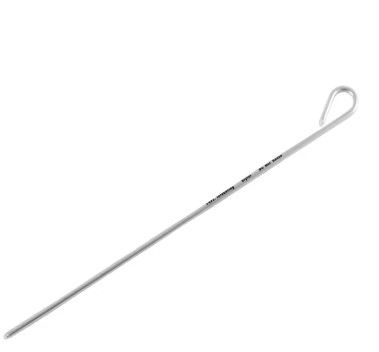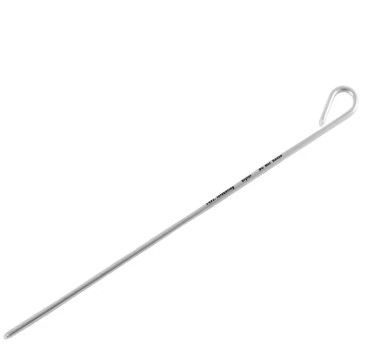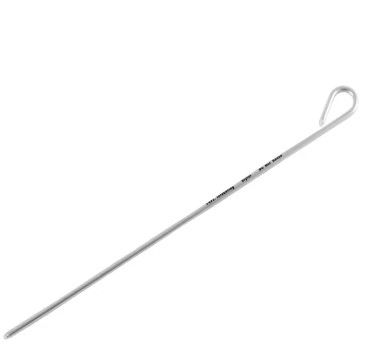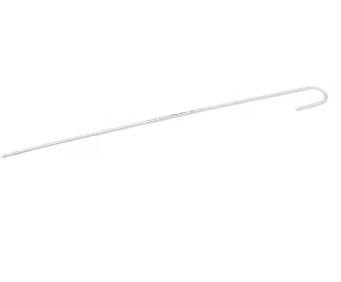
Disposable Medical Malleable Aluminum Endotracheal Tube Intubation Stylet For Stylet Intubation
-
Highlight
Disposable medical endotracheal tube intubation stylet
,Malleable aluminum endotracheal tube intubation stylet
,Stylet intubation endotracheal tube
-
NameIntubation Stylet
-
MaterialAluminum,Plastic Sheath
-
Disinfecting TypeEO
-
Quality CertificationCE
-
Instrument ClassificationClass II
-
PropertiesMedical Materials & Accessories
-
FeatureEco-friendly
-
PackingIndividual Packing
-
StockNo
-
Shelf Life3 Years
-
ApplicationClinic
-
Place of OriginChina
-
Brand NameHenan
-
CertificationCE
-
Model Number6/10/12/14
-
Minimum Order Quantity5000pcs
-
PriceNegotiable
-
Packaging DetailsIndividual Packaging
-
Delivery Time24-30 days
-
Payment TermsL/C, T/T
-
Supply Ability50000000pcs per month
Disposable Medical Malleable Aluminum Endotracheal Tube Intubation Stylet For Stylet Intubation
Disposable medical malleable aluminum endotracheal tube intubation stylet for stylet intubation
1.Product Description
Intubation stylet is an auxiliary tool used during the intubation process. Typically made of flexible metal or plastic material, it is inserted into the tracheal tube to maintain its shape and rigidity, making it easier to guide the tube into the trachea.
These tools assist healthcare providers in guiding the tracheal tube more easily through the patient's oral cavity and throat into the trachea, ensuring a smoother and safer intubation process. Intubation stylets are commonly used in situations requiring tracheal intubation, such as during surgeries, emergencies, or with patients requiring mechanical ventilation.
These products come in different designs and shapes to suit various clinical needs and patient conditions. When using an intubation stylet, healthcare providers need to ensure proper insertion of the tube and handle with care to avoid damaging the patient's airway.
Please note that this is a brief introduction. For more detailed information or if you have any questions, consult with medical professionals or relevant institutions.
2.Instructions for use
1.Prepare the Equipment:
Ensure the intubation stylet is clean and in good condition.
Have the necessary intubation equipment ready, including the tracheal tube.
2.Position the Patient:
Place the patient in the appropriate position for intubation, typically lying flat with the head extended.
3.Prepare the Tracheal Tube:
Insert the intubation stylet into the tracheal tube, ensuring it follows the curvature of the tube.
4.Insert the Styleted Tube:
Hold the tracheal tube with the stylet in place and insert it gently into the patient's mouth towards the back of the throat.
5.Guide the Tube:
Carefully guide the styleted tube through the vocal cords into the trachea. Use gentle but firm pressure.
6.Remove the Stylet:
Once the tube is in place, carefully remove the stylet while ensuring the tracheal tube remains in the correct position.
7.Secure the Tube:
Secure the tracheal tube in place according to standard protocols.
8.Confirm Placement:
Confirm correct placement of the tracheal tube using appropriate methods, such as auscultation and capnography.
9.Monitor the Patient:
Continuously monitor the patient's vital signs and tube placement during and after intubation.
10.Documentation:
Document the intubation procedure, including details of the stylet used, tube size, and any complications encountered.
11.Caution:
Handle the stylet and tracheal tube with care to prevent injury to the patient's airway.
12.Training:
Ensure healthcare providers using the intubation stylet are adequately trained in its proper use and safety precautions.
3.Product Picture
![]()
4.Precautions
- Assisting with Tracheal Intubation: Intubation stylets are commonly used to guide tracheal tubes into the trachea during procedures such as surgeries, emergency intubations, and in critical care settings.
- Difficult Airway Management: In cases where intubation is challenging due to anatomical variations or limited mouth opening, intubation stylets can aid in navigating the tracheal tube into the airway.
- Emergency Situations: Intubation stylets are vital tools in emergency medicine where rapid and efficient airway management is crucial for patient survival.
- Mechanical Ventilation: Patients who require mechanical ventilation, such as those in intensive care units, may benefit from the use of intubation stylets to secure and maintain proper placement of the tracheal tube.
- Anesthesia Administration: During the administration of general anesthesia, intubation stylets can assist anesthesiologists in securing the airway for the delivery of anesthetic gases.
- Critical Care: Intubation stylets play a significant role in critical care settings by facilitating the insertion of tracheal tubes for patients who require respiratory support.
- Training and Education: Intubation stylets are also used in medical education and training programs to teach healthcare providers proper intubation techniques and airway management skills.
- Pediatric Intubation: Intubation stylets are sometimes employed in pediatric patients to assist in the insertion of tracheal tubes in children where airway management can be more challenging.
- Transportation: In situations where patients need to be transferred between medical facilities, intubation stylets can help ensure secure airway management during transit.
5.Application
- Intubation stylet is typically used in conjunction with a tracheal tube during the process of intubation. The combination of these two tools helps healthcare providers to more effectively perform endotracheal intubation. During the intubation process, the intubation stylet provides additional support and rigidity to guide the tracheal tube through the patient's oral cavity and larynx into the trachea. Specifically, the use of the intubation stylet alongside the tracheal tube offers the following benefits:
- Guiding Tube Placement: The intubation stylet assists in guiding the tracheal tube through the patient's oral cavity, larynx, and vocal cords, ensuring accurate placement in the trachea and avoiding misplacement into the esophagus or other areas.
- Addressing Complex Situations: In cases of airway difficulty, such as anatomical abnormalities or airway narrowing, the use of the intubation stylet can facilitate a smoother intubation process.
- Providing Support and Stability: By offering additional support within the tracheal tube, the intubation stylet helps maintain the shape and rigidity of the tube, reducing the risk of tube bending or collapsing.
- Improving Success Rate: The combined use of the intubation stylet and tracheal tube can enhance the success rate of endotracheal intubation, especially in complex or emergency situations.
- Therefore, the intubation stylet is commonly employed as an adjunct tool during endotracheal intubation, used in conjunction with the tracheal tube to ensure a smoother, safer, and more successful intubation process. When using these tools, it is important to ensure that healthcare providers have appropriate training and experience to maximize patient safety and comfort.
Tracheal tubes are typically needed in the following situations:
- Mechanical Ventilation: When a patient experiences respiratory failure, coma, anesthesia, or other conditions requiring mechanical ventilation, a tracheal tube is used to connect to a ventilator to assist or replace the patient's spontaneous breathing.
- Airway Protection: In scenarios such as surgeries, intensive care, or emergency situations, tracheal tubes ensure a patent airway, preventing aspiration or other airway complications.
- Airway Management: Tracheal tubes are employed to maintain and manage a patient's airway effectively, ensuring airway patency and supporting respiratory function.
- Assisting Respiration: Tracheal tubes assist in patient respiration, particularly when artificial ventilation or oxygen delivery is necessary.
- Oxygenation and Carbon Dioxide Elimination: Tracheal tubes facilitate direct delivery of oxygen to the lungs and efficient removal of carbon dioxide from the body.
- Surgical Procedures: During surgeries requiring general anesthesia, tracheal tubes secure the airway and provide a pathway for ventilation.
- Emergency Care: In urgent situations like cardiac arrest or severe airway obstruction, tracheal tubes are used to maintain airway patency and support breathing.
- In essence, tracheal tubes are essential tools in scenarios requiring airway patency maintenance, respiratory support, or mechanical ventilation, commonly found in surgical, emergency, critical care, and other medical settings that necessitate airway management.



